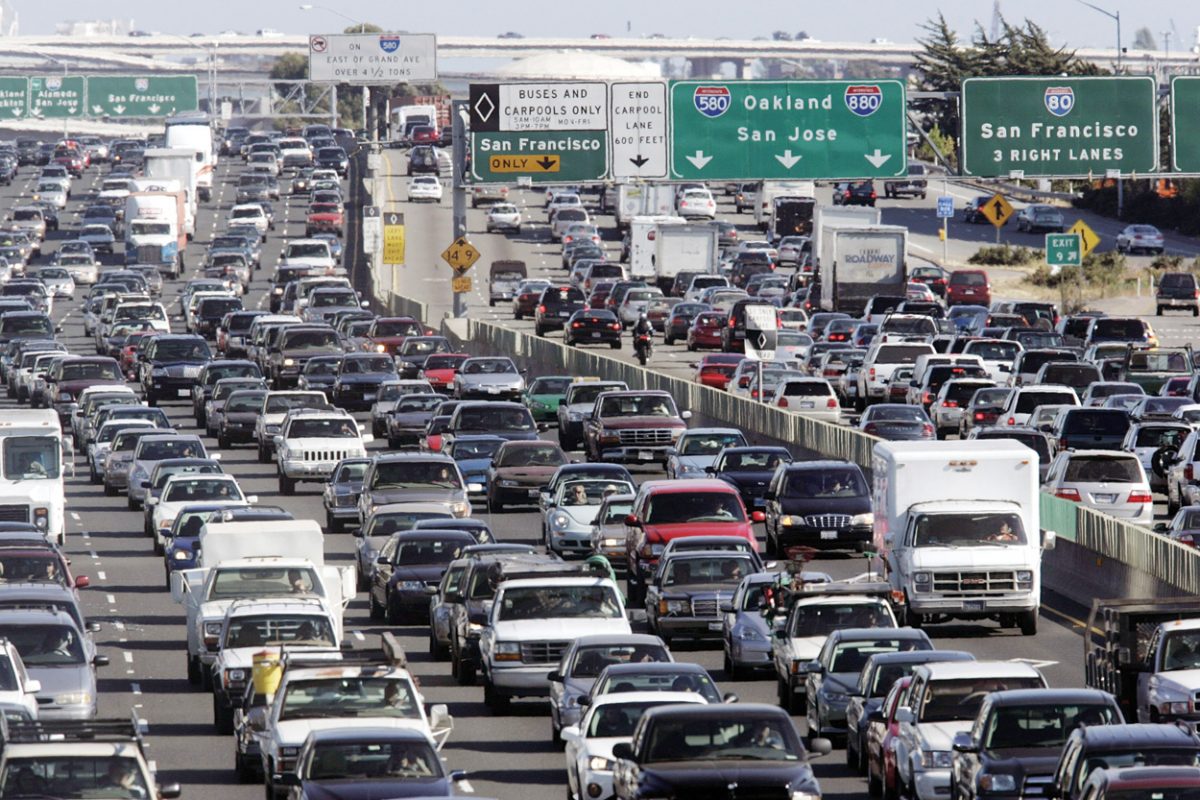Traffic consistently bad in Bay Area
SAN FRANCISCO – JUNE 30: Traffic leaves San Francisco at the beginning of the 4th of July holiday weekend on June 30, 2006 in San Francisco, California. Despite the rising cost of gasoline, daily gasoline demand was up 0.9 percent from a year ago. According to AAA about 40.7 million Americans will travel over 50 miles or more from home during the 4th of July holiday, an increase of about 1.2 percent over last year. (Photo by David Paul Morris/Getty Images)
October 2, 2017
If you live in the San Francisco Bay Area, you have become accustomed to traffic jams. The morning commute, chock-full of bumper-to-bumper interactions, starts around 5 a.m. and lasts until 10 a.m., sometimes longer.
The afternoon and evening commute begins generally around 3 p.m. and lasts until about 8 p.m. in the Bay Area. According to the state of California’s website, it is estimated that since 2010, the Bay Area has increased by 270,000 people, bringing the population to a whopping 2,606,300.
According to Seattle-based company Inrix that provides worldwide traffic information, they conducted a study earlier this year that found the San Francisco Bay Area has the fourth worst traffic in the world behind only Los Angeles, Moscow and New York.
Cal State East Bay is known as a “commuter school” according to their website and as of 2015, 15,528 students attend CSUEB annually to pursue higher education.
With the Bay Area’s population exploding with new residents, CSUEB’s largely commuter student population can expect long commutes and late arrivals.
Jennifer Cao, a senior at CSUEB, lives in San Jose, and her commute from home to school takes on average about 45 minutes each way. However, Cao stated that if there are any delays or accidents it can take about an hour and 15 minutes for the same one-way trip. Cao also said that if she leaves during peak traffic times, it can take up to two hours for the one-way trip. To combat this, Cao said she often will stay longer on campus and go to the library for a couple hours, until the traffic dies down, something many students do.
Ari Zarifay, a CSUEB student who lives in Clayton, echoed the same sentiments as Cao. Her usual commute takes about 45 minutes and upwards of an hour and half with accidents or delays. Because of this, Zarifay chooses her classes not only around her busy work schedule, but tries to avoid traveling during heavy traffic times as well.
CSUEB student Shayda Thomas who lives in Danville said she uses the traffic mobile application Waze to help her calculate how long her commute will be and if she needs to take an alternate route to get to school. Thomas said majority of her commute usually takes her through back roads from San Ramon to Castro Valley.
Living off campus and commuting to school is definitely a money-saving technique; however, being engulfed in the Bay Area traffic is the downside to it.

















